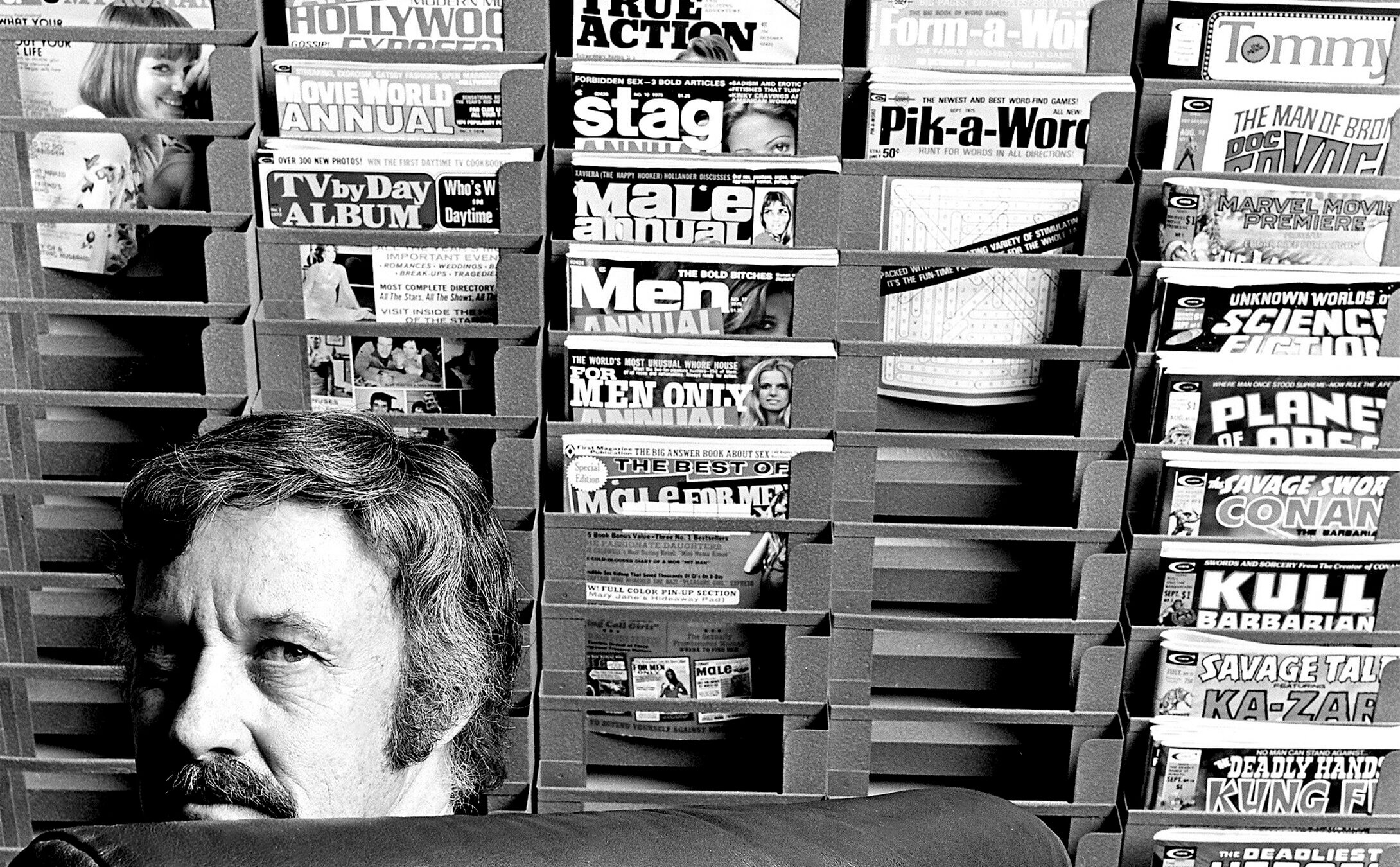The real story buried in the Disney+ Stan Lee documentary
The film overplays the Marvel editor’s contributions — and downplays his Jewishness

Stan Lee in 1975. Photo by Michael Tighe/Donaldson Collection/Getty Images
When Stan Lee was just a kid, working as a message boy for New York’s “second-largest trouser manufacturer,” he had a sort of Bob Cratchit moment.
“A week before Christmas they told me I had to leave,” Lee said of his abrupt termination. Of course we’re supposed to feel sympathetic — indeed, in the new Disney+ documentary Stan Lee, the lily is gilded. At the mention of Christmas, we see a shot of the Rockefeller Center Christmas tree and hear the plaintive chime of jingle bells.
There’s just one problem the film is loath to address: It’s not exactly like Lee, then Stanley Lieber, had to furnish presents for a tree.
Watching the tinsel in David Gelb’s documentary, I was reminded of the social media outrage surrounding the Hawkeye TV series, which a TikToker ludicrously labeled antisemitic for having the temerity to be Christmas-themed when Stan Lee was Jewish. (Critics ignored the fact, or likely didn’t know, that Lee gamely celebrated the holiday with his Christian wife. Also this.)
In fact, airbrushing the Jewishness of Lee — whose parents, he tells us, “came to New York from Eastern Europe” and whose father was a “dress cutter” (insert your euphemism of choice) — is likely consistent with his wishes. This effort at erasure was so baked into Lee’s self-mythology that it’s a symptom of the film’s worst offense: doing deference to his narrative about himself.
The documentary is almost entirely narrated by Lee and covers his salad days as an annoying, piccolo-playing gofer at his uncle’s publishing business to his quick rise to plucky editor of what would become Marvel Comics. Told through archival footage and audio as well as cute, diorama-like recreations of the Marvel bullpen, the film is more than willing to take Lee’s word that his sensibility shaped the comics and characters we know. Longtime comic artist and writer Jack Kirby’s son Neal has taken issue with the film for presenting Lee as the idea man and Kirby as merely his illustrator, a perennial sore spot when discussing their collaboration.
A fair amount of the documentary delves into the controversy of who-created-what. Saving the film from pure, one-sided hagiography, Gelb provides audio of an infamously contentious radio show exchange from 1987, where Lee, under the pretense of wishing Kirby a happy birthday, attempted to bury the hatchet before claiming credit for “every line of dialogue” in their work together. I, for one, can never hear that call and take sides with Lee and I was somewhat satisfied with the closing assertion from Lee’s successor, Roy Thomas, that neither Lee or Kirby or Spider-Man artist Steve Ditko could have “done it without the other.”
But there’s no way to take the film — which glosses over the sadness of Lee’s final years, which involved allegations of elder abuse and financial crime — as much more than a self-promoting product Stan the Brand would approve of. And this extends to its lack of Yiddishkeit.
Leaving behind the authorship question, Neal Kirby could just as well object to Lee’s generic description of his father’s choice to draw Captain America “battling Hitler and Nazis even before America had gotten into the war.” Gee, Stan — I wonder why?
While in life Jack Kirby sent Hanukkah cards with the likeness of The Thing, in filmed interviews Lee is heard referring to “the gospel as preached by Marvel” and pitching his enterprise as a sort of “religious crusade.” And while Lee claims he wanted to save his given name, Lieber, for his more literary output, one can’t help but feel his pen name was also chosen for reasons typical for 20th century Jews in entertainment.
As Lee biographer Abraham Josephine Riesman observed in a piece for Jewish Currents, Lee “was an artist who spent much of his life trying — with apparent success — to distance himself from Jewish practice, Jewish communal life, even from the designation ‘Jewish.’”
So it only makes sense that the only solid hint of his background — beyond the garment district bywords — is his use of the word “nebbishy” in describing Peter Parker to Larry King.
“To posthumously conscript Lee into a Jewishness he did not want is to play an intellectually dangerous and narcissistic parlor game,” Riesman concluded, and, while she has a point, to neglect the Jewishness entirely is an oversight, as Riesman’s own book, which begins with a scene in a Romanian shtetl, can attest.
The film is so eager to flatter Lee by presenting him as he saw himself that it misses the distinctly ethnic discomfort and context that birthed the World of Marvel. We needn’t think the Silver Surfer was a metallic Martin Buber to acknowledge that these creators, in an effort to assimilate or just pay the bills, birthed a new American medium rife with secret identities, patriotic zeal and honest-to-goodness golems.
That may not be the story Lee — or Gelb — wanted to tell, but it’s a crucial subtext for any true believer.























